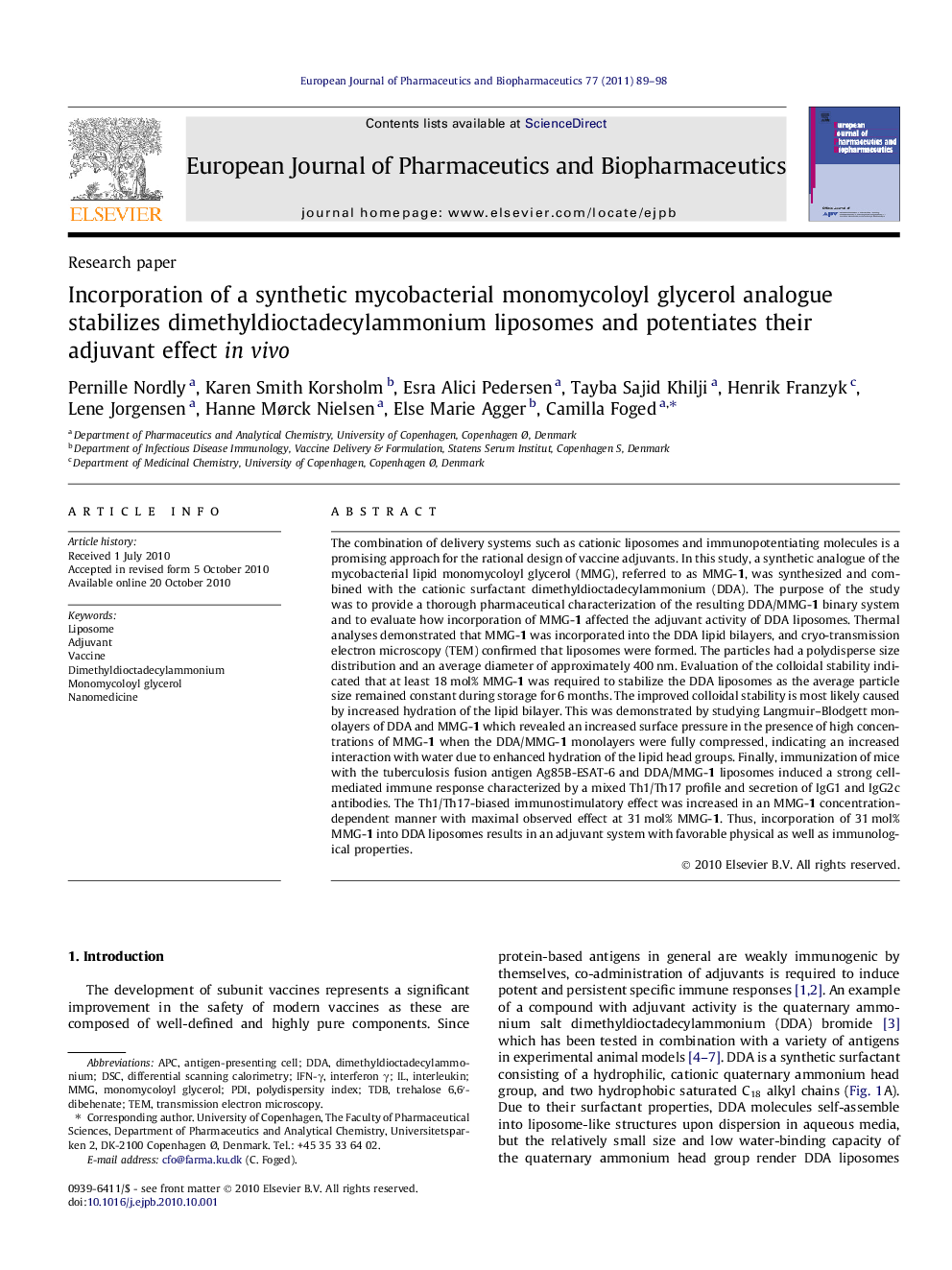| Article ID | Journal | Published Year | Pages | File Type |
|---|---|---|---|---|
| 2084217 | European Journal of Pharmaceutics and Biopharmaceutics | 2011 | 10 Pages |
The combination of delivery systems such as cationic liposomes and immunopotentiating molecules is a promising approach for the rational design of vaccine adjuvants. In this study, a synthetic analogue of the mycobacterial lipid monomycoloyl glycerol (MMG), referred to as MMG-1, was synthesized and combined with the cationic surfactant dimethyldioctadecylammonium (DDA). The purpose of the study was to provide a thorough pharmaceutical characterization of the resulting DDA/MMG-1 binary system and to evaluate how incorporation of MMG-1 affected the adjuvant activity of DDA liposomes. Thermal analyses demonstrated that MMG-1 was incorporated into the DDA lipid bilayers, and cryo-transmission electron microscopy (TEM) confirmed that liposomes were formed. The particles had a polydisperse size distribution and an average diameter of approximately 400 nm. Evaluation of the colloidal stability indicated that at least 18 mol% MMG-1 was required to stabilize the DDA liposomes as the average particle size remained constant during storage for 6 months. The improved colloidal stability is most likely caused by increased hydration of the lipid bilayer. This was demonstrated by studying Langmuir–Blodgett monolayers of DDA and MMG-1 which revealed an increased surface pressure in the presence of high concentrations of MMG-1 when the DDA/MMG-1 monolayers were fully compressed, indicating an increased interaction with water due to enhanced hydration of the lipid head groups. Finally, immunization of mice with the tuberculosis fusion antigen Ag85B-ESAT-6 and DDA/MMG-1 liposomes induced a strong cell-mediated immune response characterized by a mixed Th1/Th17 profile and secretion of IgG1 and IgG2c antibodies. The Th1/Th17-biased immunostimulatory effect was increased in an MMG-1 concentration-dependent manner with maximal observed effect at 31 mol% MMG-1. Thus, incorporation of 31 mol% MMG-1 into DDA liposomes results in an adjuvant system with favorable physical as well as immunological properties.
Graphical abstractMMG-1 is proposed to stabilize the DDA liposomes by increased hydration of the lipid bilayer due to hydrogen bond formation between the glycerol moiety of MMG-1 and the aqueous medium as well as by reducing the repulsion between adjacent cationic DDA molecules. This was supported by studying Langmuir-Blodgett monolayers of DDA and MMG-1.Figure optionsDownload full-size imageDownload as PowerPoint slide
